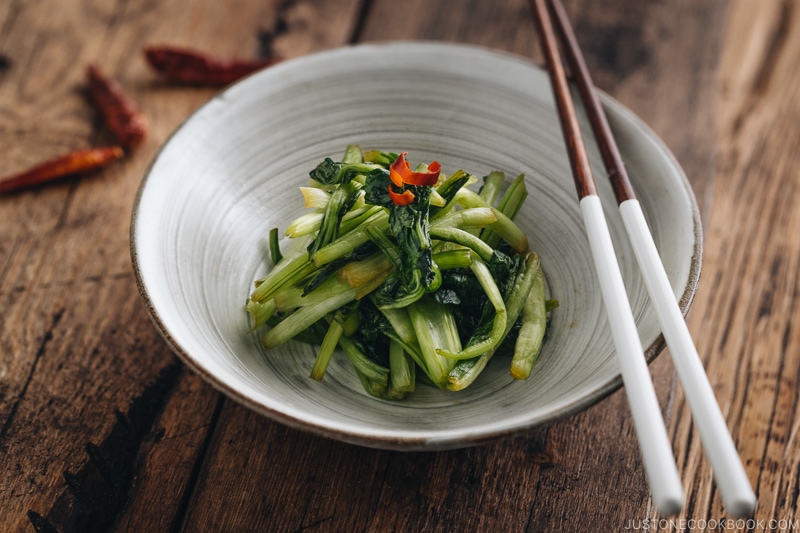
Shoyuzuke or Soy Sauce Pickling is one of the easiest Tsukemono (Japanese pickles ) you can make at home! Pickle fresh seasonal vegetables and serve along with your Japanese meal.
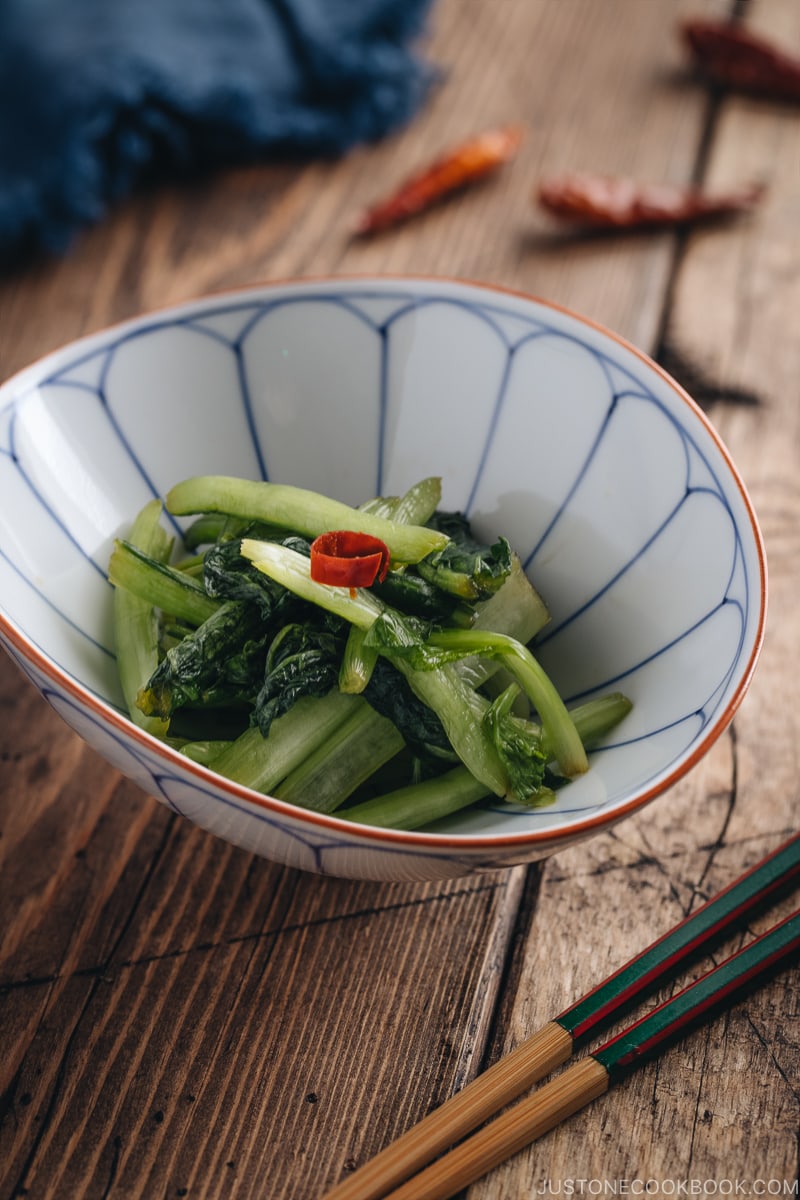
Pickling may come across as a tedious undertaking for any beginners, but you’ll be surprised how easy it is once you give it a try. In the world of Japanese pickles, you can start out by experimenting with some of the simplest pickling methods like Shoyuzuke (醤油漬け).
Shoyuzuke refers to soy sauce (shoyu) pickling (zuke). It is a very basic form of Japanese pickles known collectively as tsukemono (漬物). If you’re interested in learning more about different types of tsukemono, read Tsukemono: A Guide to Japanese Pickles on my blog.
Tsukemono has several types based on the pickling agent:
- Shiozuke (塩漬け) – salt
- Suzuke (酢漬け) – vinegar
- Amazuzuke (甘酢漬け) – sugar and vinegar
- Misozuke (味噌漬け) – miso
- Shoyuzuke (醤油漬け) – soy sauce
- Kasuzuke (粕漬け) – sake kasu (lees)
- Shiokojizuke (塩麹) – rice koji/mold-cultured rice
- Nukazuke (糠漬け) – nuka (rice bran)
- Karashizuke (からし漬け) – Japanese hot mustard karashi
- Satozuke (砂糖漬け) – sugar
This is part of the Tsukemono series I’m covering, but today let’s talk about Shoyuzuke.
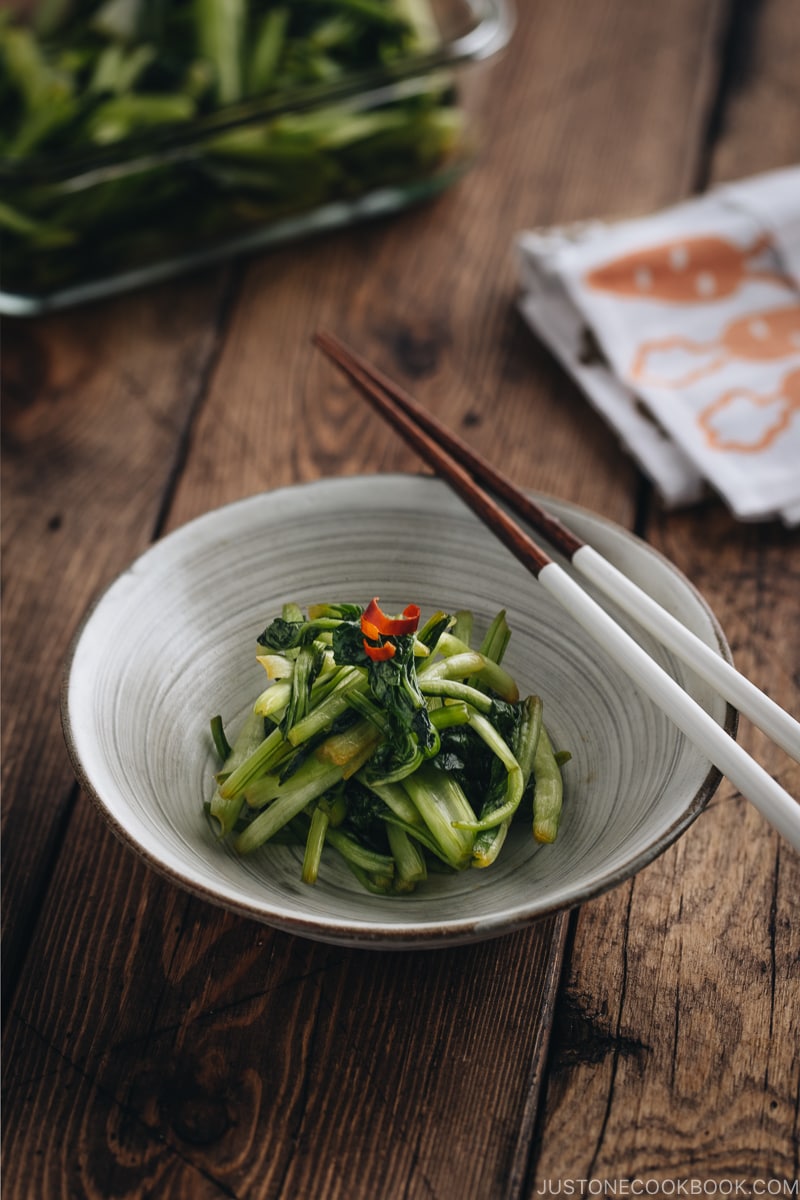
What’s Shoyuzuke?
Shoyuzuke (醤油漬け) is to pickle ingredients in soy sauce-base agent, or it also refers the soy sauce-pickled food. The common ingredients for shoyuzuke include:
- Japanese mustard spinach (Komatsuna 小松菜)
- Japanese turnip (Kabu カブ)
- Daikon (Japanese radish)
- Cucumber
- Eggplant
- Celery
- Cabbage
- Broccoli rabe
- Root vegetables like renkon (lotus root) and gobo (burdock root)
After pickling, the vegetables are eaten as they are (raw).
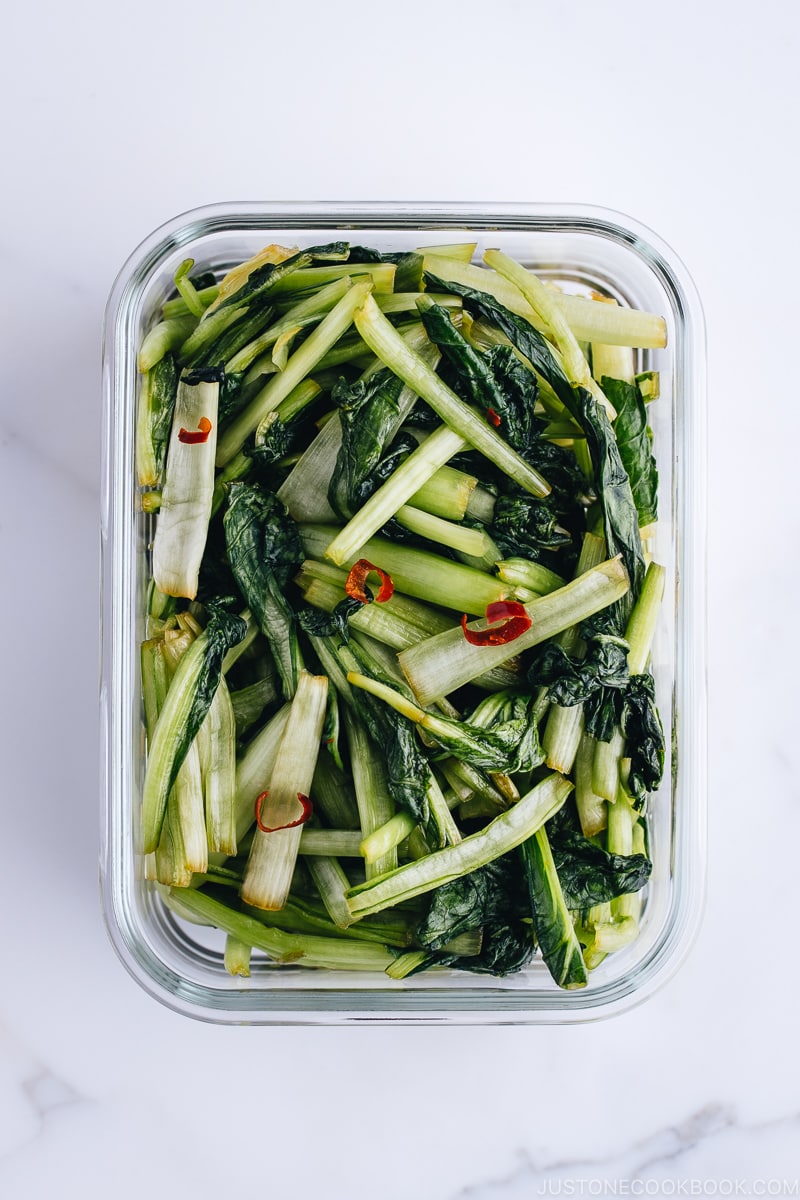
How to Pickle Vegetables in Soy Sauce
The pickling agent is very easy to make. All you need is to mix the following ingredients together. You can also include the optional flavor-boosters if you like:
- Soy sauce
- Rice vinegar
- Sugar
- Red chili pepper (optional)
- Dashi (optional)
- Mirin (optional)
- Grated ginger (optional)
- Myoga ginger (optional)
- Julienned shiso (optional)
- Garlic (optional)
- Sesame seeds (optional)
After you put your ingredients in the soy sauce marinade, let it pickle in the refrigerator.
For any vegetables with high moisture contents such as daikon and cucumber, excess moisture should be extracted prior to pickling to prevent mold growth. Rub the vegetables with salt (5% of the weight of the vegetable).

What to Serve with Shoyuzuke
Just like Shiozuke and Misozuke, Shoyuzuke is definitely one of the easiest ways to enjoy vegetables. For a quick dinner, I often serve these pickled vegetables as a side with steamed rice and miso soup and I’d add a protein dish like Miso Cod or Chicken Tempura. I also love adding the pickled vegetables on Ochazuke for a quick, simple, and healthy snack.
Japanese Ingredient Substitution: If you want to look for substitutes for Japanese condiments and ingredients, click here.
Sign up for the free Just One Cookbook newsletter delivered to your inbox! And stay in touch with me on Facebook, Pinterest, YouTube, and Instagram for all the latest updates.
Tsukemono – Shoyuzuke (Soy Sauce Pickling)
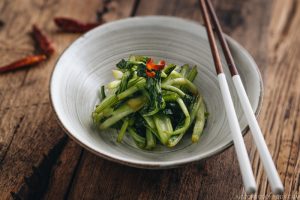
Shoyuzuke or Soy Sauce Pickling is one of the easiest Tsukemono (Japanese pickles ) you can make at home! Pickle fresh seasonal vegetables and serve along with your Japanese meal.
- 1 lb Komatsuna ((or any greens) (454 g))
- 1 red chili pepper
Seasonings
- 2 Tbsp sugar ((25 g))
- ¼ cup soy sauce ((60 ml))
- 1 ½ Tbsp rice vinegar ((20 ml))
-
Gather all the ingredients. Important: Measure the weight of the vegetables. You will need a heavy object (and a plate) that’s 1.5-2 times the weight of the vegetable.
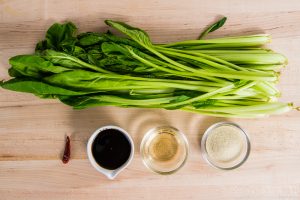
-
Cut the greens into 2-inch pieces. Chop 1 red chili pepper into smaller pieces. If you want mild spiciness, discard the seeds.
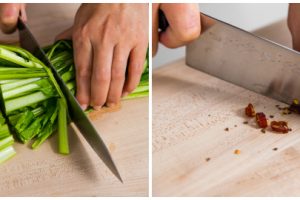
-
Add the greens in a one-gallon glass jar (or any big container).
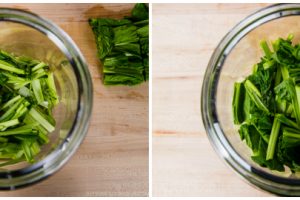
-
Add the chopped red chili pepper, 2 Tbsp sugar, ¼ cup soy sauce, 1 ½ Tbsp rice vinegar.
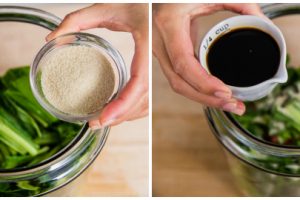
-
WIth your hands (covered with plastic gloves), mix everything together well.
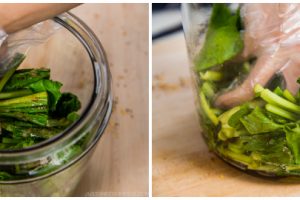
-
Place a flat plate on top of the greens and then put a weight (1.5-2 times the weight of vegetable) on top of the plate. I used a mason jar with water.
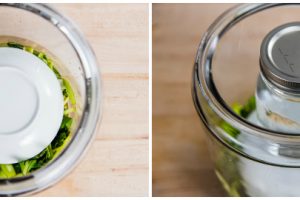
-
Close the lid (or cover with a plastic wrap) and set aside at room temperature for 6 hours.
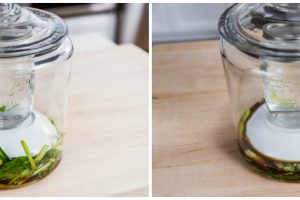
-
This is after 6 hours. The greens are completely submerged in the liquid.
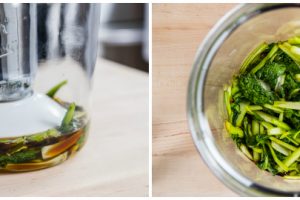
-
Squeeze the liquid out and transfer to an airtight container. To store, keep Shoyuzuke in the refrigerator for up to a week.
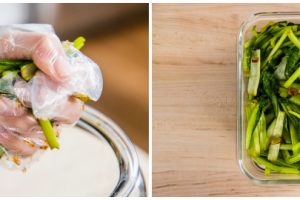
Japanese Ingredient Substitution: If you want to look for substitutes for Japanese condiments and ingredients, click here.
Recipe by Namiko Chen of Just One Cookbook. All images and content on this site are copyright protected. Please do not use my images without my permission. If you’d like to share this recipe on your site, please re-write the recipe in your own words and link to this post as the original source. Thank you.